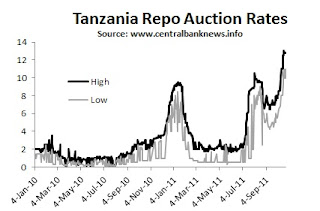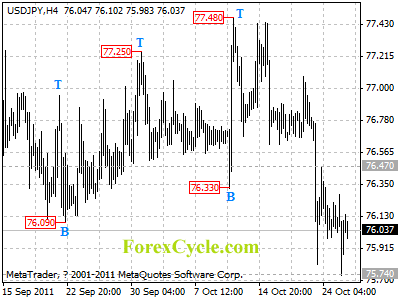Data on confidence yesterday also signaled a mild downtick in outlook from the previous month. The news has had some impact on the forex market, though it could magnify through longer-term analyses on US financial markets should increases in investment and spending increase over the coming months.
Economic News
USD – Dollar Trading Bullish as Pessimism Dominates Trading
The US dollar (USD) was seen trading mildly bullish Tuesday as investors weighed the impact of recent consumer confidence and investment reports from the American economy. A sudden wave of risk appetite last week seemed to have pushed down on the USD, but pessimism emerging early this week held back some of those losses.
Data on confidence yesterday also signaled a mild downtick in outlook from the previous month. The news has had some impact on the forex market, though it could magnify through longer-term analyses on US financial markets should increases in investment and spending increase over the coming months.
As for today, there will be a string of reports on housing and industrial orders. Liquidity will likely be higher in today’s afternoon trading as these releases begin to get published. With consumer confidence, inflation, and industrial production in focus this week and next, the picture on future demand and growth levels is expected to become moderately clarified and this could weigh heavily on currency direction in the short- and mid-term.
GBP – Pound Sterling Gaining as Data Supports Expansion
The Great Britain pound (GBP) is expected to be seen trading with bullish results this week after reports on the country’s inflation revealed a mild uptick this past month. Against the US dollar (USD) the pound has been trending upwards as the greenback’s bearish moves help other currencies rise.
With recent inflationary data out of Britain, it seems the pessimism in Europe isn’t trickling across the English Channel, at least for now. Holiday spending and recent upticks in manufacturing should shore up the pound’s advances this month. Moreover, though housing data seemed a bit pessimistic, consumer prices are indeed growing at a healthy rate in the UK.
Sentiment across the region may have turned slightly away from negativity, with many analysts and economists expecting moves towards safety by traders later this week, but the GBP could see a solid weathering of this financial storm so long as data remains bullish. Great Britain appears positioned for a relatively better quarter than its southerly neighbors. The pound could see some bullish movement this week as a result of this overall sentiment.
JPY – Japanese Yen Consolidating as Traders Weigh Global Sentiment
The Japanese yen (JPY) was seen trading mildly lower versus most other currencies this morning as its value as an international safe haven was being challenged by an air of impending intervention by the Bank of Japan (BOJ). Being linked to international risk sentiment, the yen has experienced an expected uptick during a period when shifts away higher yielding assets became prominent. The JPY has been experiencing several long strides lately from the various shifts into riskier assets.
The latest moves of the yen are causing some concerns, however, as many speculators are anticipating another round of intervention by the BOJ. With industrial production data out this week, traders are waiting to see what the BOJ will do in the face of a downturn. A strengthening yen has benefits for the buying power of the island economy, though its dependence on exports makes a strong yen unfavorable for longer-term growth in Japan’s current financial model. As the island currency remains bullish, the pressure begins to mount for the expected bank move to lower its currency strength.
Crude Oil – Crude Oil Trading Flat with Dollar in Ascent
Crude Oil prices held steady Tuesday as sentiment appeared to favor a mild uptick in global stocks following reports of monetary moves being made by several central banks. Data releases out of Europe and the US last week are still driving many investors back into safe-haven assets as many reports suggested a surprise downtick in growth among global industrial output and consumer spending.
An expected spike in dollar values due to this week’s risk sensitive environment has prevented many investors from taking positions on physical assets, creating a consolidation pattern on oil charts. As such, sentiment appears to have the price of crude oil holding steady. Should Crude Oil sentiment continue to flatten this week, oil prices may reach a decision point which forces a wide swing later in the trading week.
Technical News
EUR/USD
The EUR/USD has moved above its consolidation pattern from the previous week and has a technical retracement towards 1.4040, the 50% Fibonacci retracement off of the move stemming from the 1.4940 high in May to the October low of 1.3145. Both daily and weekly stochastic oscillators are moving higher and as such further resistance is located near 1.4100 where the 100 and 200-day moving averages rest. To the downside support is seen at last week’s low of 1.3650.
GBP/USD
Cable has jumped out to new 6-week high to its 50% Fibonacci retracement at 1.6010 from the move lower covering the April high to the October low. A break of this retracement level would put in play the 1.6110 resistance from the August low followed by the 61% retracement level at 1.6180. 1.5850 can be eyed as the first significant support line followed by 1.5630.
USD/JPY
Last Friday the sleepy USD/JPY awakened from its slumber and quickly set a new all-time low of 75.78, triggering a plethora of stops before moving back above the 76 yen mark. While the range trading environment may continue, a quick move below the 75 yen level could invite an additional round of intervention from the Ministry of Finance which would likely take out the initial resistance levels at 77.85. The post intervention high of 80.25 may find willing sellers of the pair at more attractive levels.
USD/CHF
The one way price move in the USD/CHF has ended with the pair forming what looks to be a falling wedge pattern. The chart pattern typically brings about a breakout to the upside but forex traders should follow the price action. The consolidation pattern has resistance at 0.9025, a level that coincides with the rising trend line from the August low which was broken last week. Additional resistance is located at 0.9340-0.9315. Support is found at 0.8640 and 0.8550.
The Wild Card
Gold
Gold prices recently performed a ‘bear trap’ when the price of spot gold fell below its rising support line from the September 28th low only to pull higher the same day and continue to advance higher to test the $1,695 level. Forex traders should note that if the price continues to move higher there are retracement targets located at $1,725 and $1,771. Support comes in at the October low of $1,603.
Forex Market Analysis provided by ForexYard.
© 2006 by FxYard Ltd
Disclaimer: Trading Foreign Exchange carries a high level of risk and may not be suitable for all investors. There is a possibility that you could sustain a loss of all of your investment and therefore you should not invest money that you cannot afford to lose. You should be aware of all the risks associated with Foreign Exchange trading.




